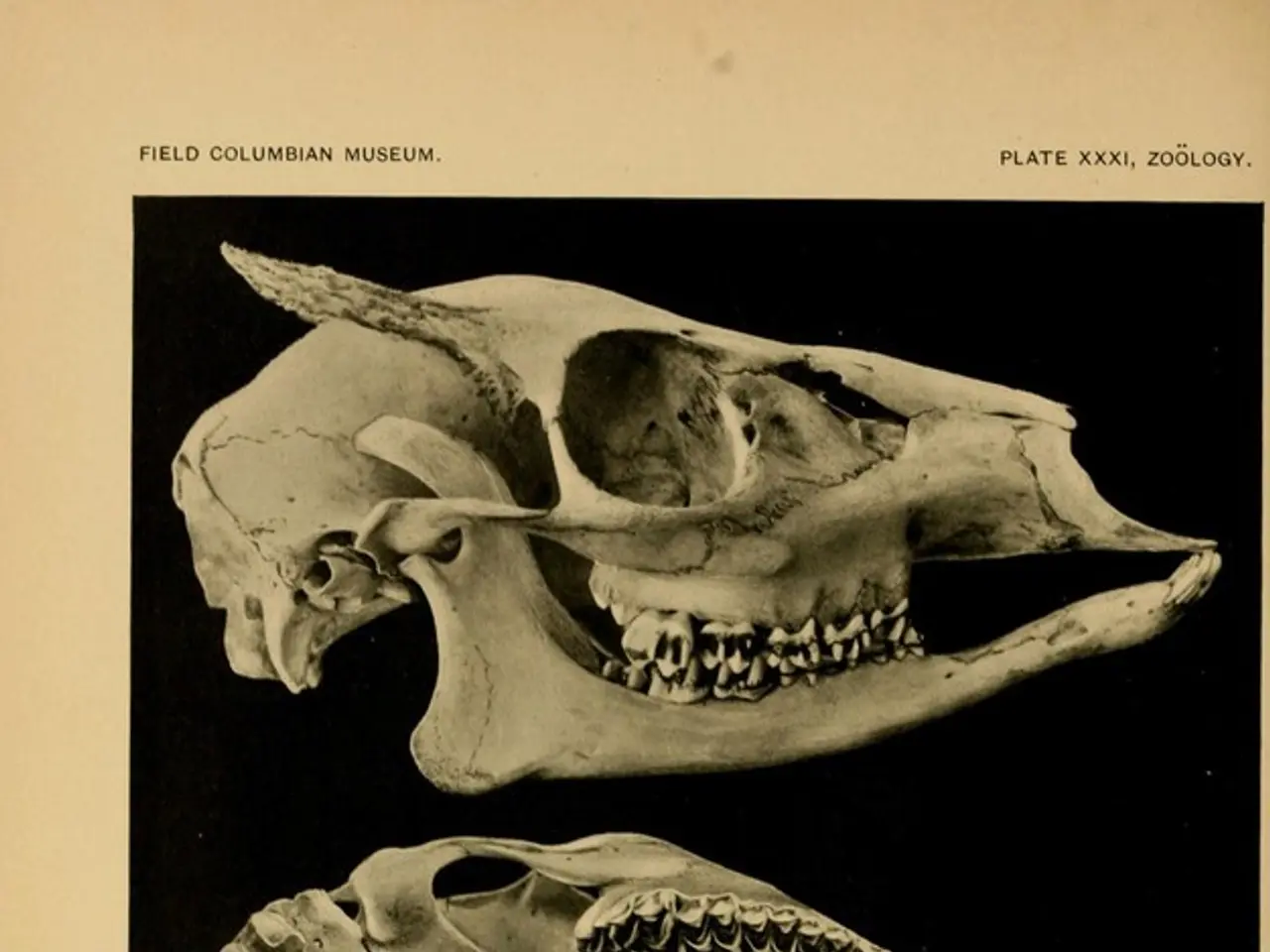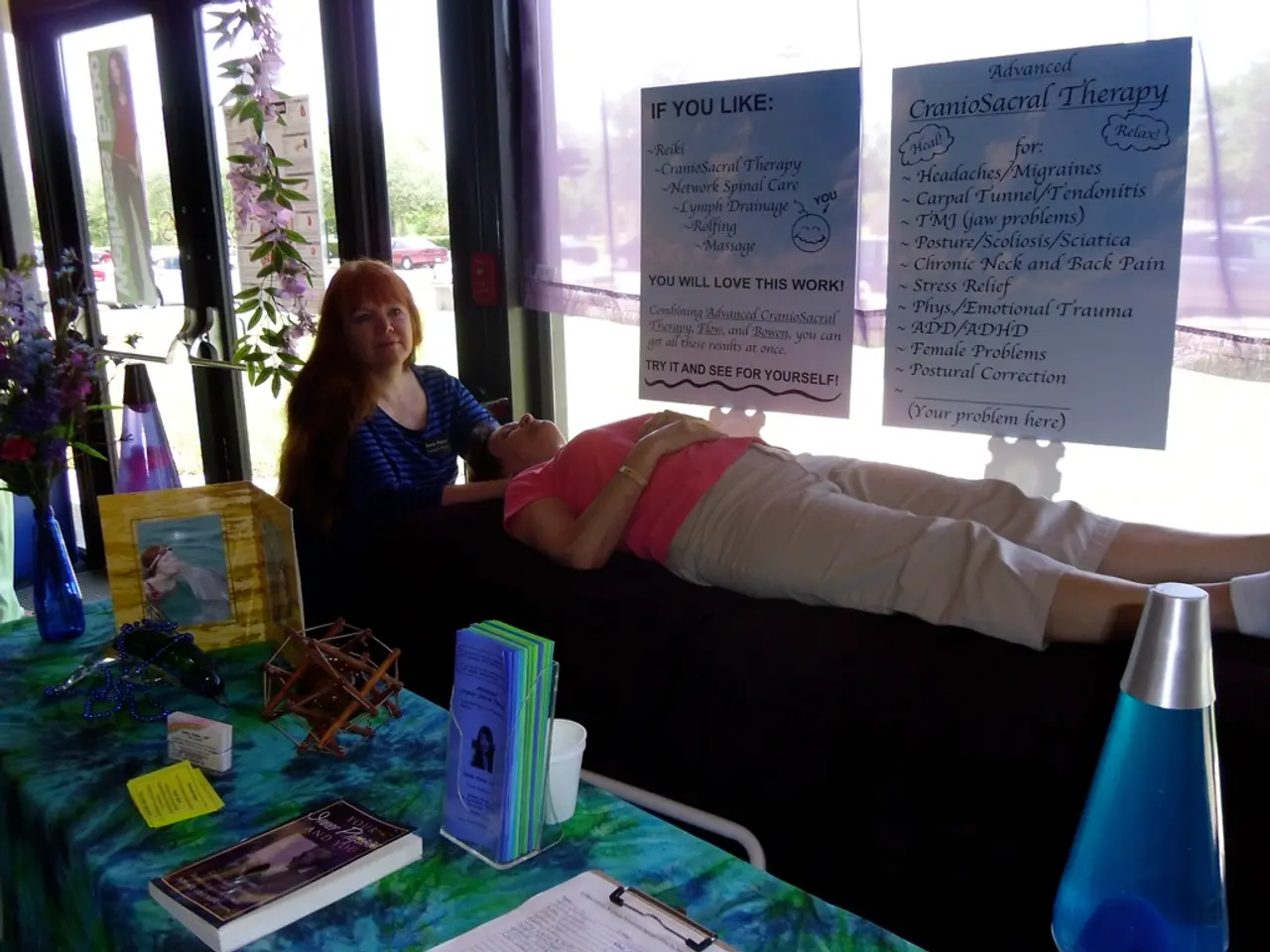Visual Guide for Distinct Hernia Classifications, illustrated with relevant images
=========================================================================
In the human body, hernias occur when an internal organ or tissue pushes through the muscle or tissue of its typical location. This article provides an overview of common types of hernias, their symptoms, treatment options, and prevention methods.
Symptoms by Hernia Type
Each hernia has specific symptoms that can help in identifying and diagnosing the condition.
- Umbilical Hernia: Presents as a soft bulge around the belly button, which may be tender or cause skin discoloration if the hernia cannot be pushed back. Often seen in infants and adults with obesity or pregnancy. Symptoms: visible bulge, tenderness, sometimes nausea or vomiting if intestinal blockage occurs.
- Inguinal Hernia: Common in men, causes swelling or a bulge in the groin area that enlarges with coughing or lifting. May cause discomfort or burning sensations.
- Femoral Hernia: Occurs near the upper thigh/groin, more common in older women, manifests as a lump with pain near the thigh or groin. Since it risks complications, early symptoms may include pain and visible swelling.
- Incisional Hernia: Appears as a lump or swelling near previous surgical scars due to weak tissue. Symptoms include visible bulging and sometimes pain or obstruction, which can worsen over time.
- Epigastric Hernia: Usually a small bulge or lump in the upper midline of the abdomen, between the belly button and chest, often causing localized pain or discomfort.
- Spigelian Hernia: Presents as a swelling along the edge of the abdominal muscles (the Spigelian fascia). It might cause pain and a noticeable lump under the skin.
- Hiatal Hernia: No external bulge. Symptoms mainly involve gastrointestinal discomfort such as heartburn, chest pain, difficulty swallowing, and stomach discomfort due to part of the stomach pushing through the diaphragm.
- Muscle Hernia: Causes localized swelling and pain on the surface of muscles, typically after trauma or repetitive strain.
- Strangulated Hernia: A medical emergency where the herniated tissue’s blood supply is cut off, causing severe pain, tenderness, discoloration, nausea, vomiting, and potentially life-threatening complications.
Treatment Options
Treatment for hernias depends on their type, size, symptoms, and risk of complications like strangulation.
- Watchful Waiting: Some hernias (especially small umbilical hernias in infants, or asymptomatic hiatal hernias) may be monitored without immediate surgery, as they can resolve or remain stable.
- Surgical Repair: Most hernias causing symptoms, enlarging, or with risk of complications require surgery. Techniques include open surgery, laparoscopic surgery, and robotic surgery.
- Temporary Measures: Use of trusses or abdominal binders can relieve symptoms temporarily in patients awaiting surgery or those unfit for surgery.
- Medication & Lifestyle for Hiatal Hernia: Treatment may include acid-reducing medications, dietary changes, and weight management; surgery is reserved for severe cases.
- Emergency Surgery: Required urgently for strangulated hernias to restore blood flow and prevent tissue death.
Prevention
Preventing hernias involves maintaining a healthy lifestyle, including maintaining a healthy weight, avoiding heavy lifting, and exercising regularly. However, in some cases, such as after surgery or in individuals with a family history of hernias, hernias may still occur.
In summary, prompt medical evaluation is key to appropriate management of hernias. Common symptoms include a noticeable bulge (umbilical, inguinal, femoral, incisional, epigastric, spigelian, muscle hernias) and pain or discomfort. Hiatal hernias often present with digestive symptoms without an external bulge. Treatment ranges from observation to minimally invasive or open surgery depending on hernia type, size, symptoms, and risk of complications like strangulation.
- science has made strides in predicting the degeneration of COPD in older individuals, enabling early treatment.
- People with psoriatic macular lesions on the skin may be at a higher risk of developing multiple types of diabetes, according to health-and-wellness research.
- AQ (air quality) monitoring can help in the prevention and management of various respiratory conditions, such as asthma, emphysema, and obesity-related health issues.
- In addition to managing symptoms of arthritis, certain type 2 diabetes medications can reduce the risk of progressive degeneration in diseases like multiple sclerosis.
- Genetic screening can help identify individuals at a higher risk of suffering from hernias, particularly those with a family history of the medical condition.
- Preventing age-related diseases like hernias includes maintaining a balanced diet, engaging in regular exercise, and managing weight, all crucial components of health-and-wellness.
- A predictive model for sclerosis has been proposed to identify potential sites of disease progression and provide targeted treatment for future interventions.
- In recent years, multiple research studies have explored the link between obesity and the development of macular degeneration in the eyes, especially for middle-aged and older adults.




